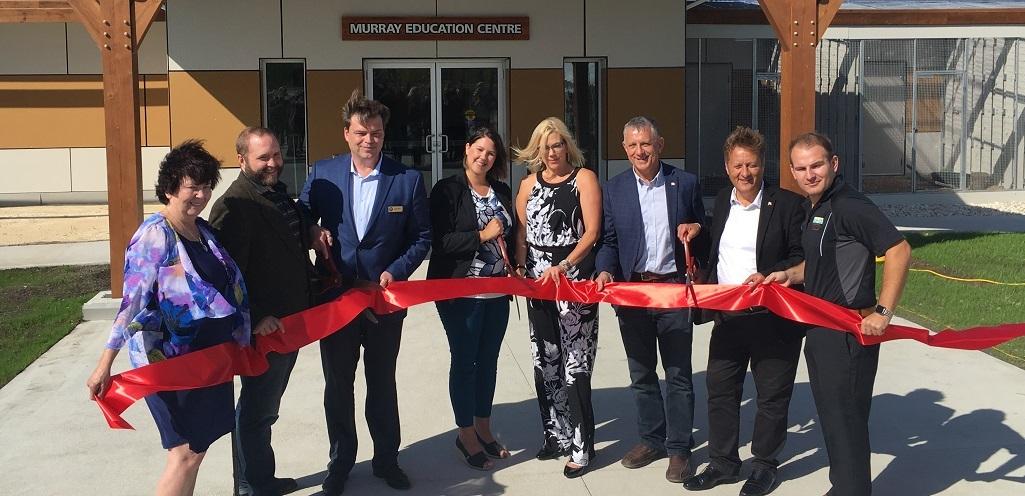Hundreds of people attended the opening of the new Wildlife Haven Rehabilitation Centre (WHRC), near Île-des-Chênes, to support the opening of the organization’s modern facility on Sunday, September 22.
“We are very proud of the facility and it has taken about four years to get to this point,” said David Hunt, president of the WHRC board.
The Wildlife Rehabilitation started as a group of Manitobans, scattered across Winnipeg and the surrounding area, with the desire to help wild animals. Beginning in 1984, they met in each other’s homes and backyards. The group at last relocated to the Île-des-Chênes area in 2008, starting out in a former dairy farm on Old Highway 59 until moving a few kilometres down the road to their new location.
“For 35 years we’ve been operating out of temporary facilities,” said Zoe Nakata, Executive Director of WRHC. “We really needed a permanent home.”
WHRC has helped 1,965 animals so far in 2019, and more than 41,000 animals since 1984. Their services help orphaned and injured animals rehabilitate into the wild or move to permanent shelters.
“Our goal is to rehabilitate and release [the animals] back where they found them,” says Hunt.
The new facility features bird enclosures, designated buildings for mammals, and a waterfowl facility. A pond is also new, as well as animal ambassador habitats. Other benefits of the new location include geothermal heating, easy-clean walls and floors, and ventilation.
The goal of the WRHC is to rehabilitate animals, and they have taken extra precautions to facilitate this. Natural lighting, adjustable walls, and a care specialist all contribute to an animal’s ability to return to the wild. If an animal is unable to be rehabilitated, it is sent to a permanent animal sanctuary.
WRHC not only works to rehabilitate wildlife; they are also advocates for the animals through the process of education. Volunteers work with animal ambassadors to educate people about Manitoba’s wildlife.
Volunteers of all ages have been working with WRHC since the beginning. Currently, there are 90 volunteers, aged 18 to 85 years old. Many work directly with animal care and education. There are only three full-time staff members, and because of this the organization relies heavily on its volunteers.
One of those volunteers, Zoe Kogan, has been with the organization for more than four years. Like many visitors to the facility, she hadn’t known a place like this existed until she found an injured squirrel in her backyard one day.
“When I found out about Wildlife Haven, I was very impressed,” said Kogan.
Her first experience with WRHC may have started with a small squirrel, but today she accompanies animals like a great-horned owl on trips to help educate students about all the wonderful animals that can be found on the Manitoba prairies. Volunteers like her often visit schools, make presentations, and host booths at local events. The new WRHC facility will also host birthday parties, thanks to their Murray Education Centre.
The WRHC has already surpassed the number of animals they helped last year and are prepared to help many more in their new facility.
“We’re just always so thankful and impressed with the generosity of people,” said Nakata. “Those kinds of things are always heart-warming to see.”


